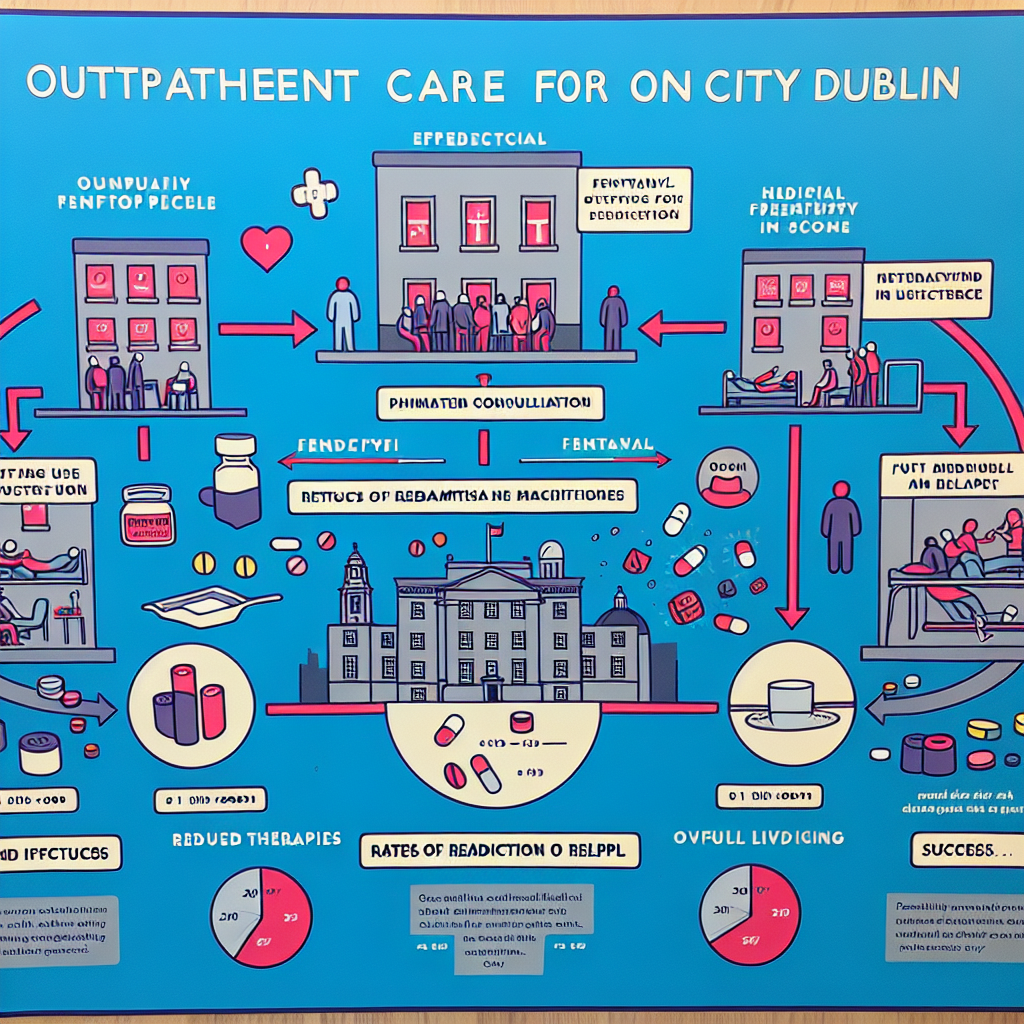-
Table of Contents

“Reclaim Your Life: Safe, Supportive, and Effective Detox for Fentanyl Addiction”
Introduction
A detox program for fentanyl addiction is a structured and medically supervised process designed to help individuals safely withdraw from the potent opioid. Given fentanyl’s high potency and the severe withdrawal symptoms it can induce, these programs typically offer a combination of medical interventions, psychological support, and holistic therapies. Patients can expect a comprehensive assessment upon entry, followed by a personalized treatment plan that may include medications to ease withdrawal symptoms, continuous medical monitoring, and counseling services. The goal is to manage the physical and emotional challenges of detoxification, reduce the risk of complications, and prepare individuals for ongoing addiction treatment and recovery.
Understanding the Phases of a Fentanyl Detox Program
Embarking on a detox program for fentanyl addiction is a courageous and transformative journey. Understanding the phases of a fentanyl detox program can provide clarity and reassurance, helping individuals and their loved ones navigate this challenging yet hopeful path. The process typically begins with an initial assessment, where healthcare professionals evaluate the individual’s physical and psychological state. This comprehensive evaluation is crucial as it informs the personalized treatment plan, ensuring that the detox process is tailored to meet the specific needs of the individual.
Following the assessment, the next phase is stabilization. During this period, the primary goal is to manage withdrawal symptoms, which can be particularly intense with fentanyl due to its potency. Medical supervision is essential, as it ensures that any complications are promptly addressed. Medications may be administered to alleviate symptoms such as nausea, muscle pain, and anxiety, making the detox process more bearable. This phase is often the most physically demanding, but it is also a critical step towards recovery.
As stabilization progresses, the focus gradually shifts to fostering emotional and psychological resilience. Counseling and therapy sessions become integral components of the detox program. These sessions provide a safe space for individuals to explore the underlying issues that may have contributed to their addiction. Cognitive-behavioral therapy (CBT) and other therapeutic approaches help individuals develop coping strategies, empowering them to handle triggers and stressors without resorting to substance use. This phase is not just about detoxifying the body but also about healing the mind and spirit.
Transitioning from detox to ongoing treatment is the next pivotal phase. Detox alone is rarely sufficient for long-term recovery; it must be followed by a comprehensive treatment plan that addresses the multifaceted nature of addiction. This may include inpatient or outpatient rehabilitation programs, support groups, and continued therapy. The aim is to build a robust support network that encourages sustained sobriety. During this phase, individuals learn to rebuild their lives, focusing on personal growth, relationships, and setting new goals.
Throughout the detox program, the importance of self-care and holistic practices cannot be overstated. Nutrition, exercise, and mindfulness activities such as yoga and meditation play a significant role in the recovery process. These practices help restore physical health, reduce stress, and promote a sense of well-being. By integrating these elements into their daily routine, individuals can enhance their overall quality of life and strengthen their commitment to recovery.
Family involvement is another crucial aspect of a successful detox program. Addiction often affects not just the individual but also their loved ones. Family therapy sessions can help mend strained relationships, improve communication, and provide a support system that is vital for long-term recovery. Educating family members about addiction and recovery can also foster a more understanding and supportive environment.
In conclusion, a detox program for fentanyl addiction is a multifaceted process that involves several critical phases, each designed to address different aspects of addiction and recovery. From the initial assessment and stabilization to ongoing treatment and holistic practices, every step is aimed at helping individuals reclaim their lives. While the journey may be challenging, it is also filled with opportunities for growth, healing, and transformation. With the right support and a comprehensive approach, individuals can overcome fentanyl addiction and embark on a path to a healthier, more fulfilling life.
Key Benefits and Challenges of Fentanyl Detox Programs
Embarking on a detox program for fentanyl addiction is a courageous and transformative journey. Understanding the key benefits and challenges of such a program can provide clarity and motivation for those considering this path. Detoxification, or detox, is the first crucial step in overcoming fentanyl addiction, and it involves the process of allowing the body to rid itself of the drug while managing withdrawal symptoms. This phase is essential for laying the foundation for long-term recovery and offers several significant benefits, although it is not without its challenges.
One of the primary benefits of a fentanyl detox program is the medical supervision provided. Fentanyl is a potent synthetic opioid, and withdrawal from it can be particularly intense and potentially dangerous. In a detox program, medical professionals monitor patients around the clock, ensuring their safety and comfort. This supervision can help manage severe withdrawal symptoms such as nausea, vomiting, muscle pain, and anxiety. Additionally, medical staff can administer medications to alleviate these symptoms, making the detox process more bearable and reducing the risk of complications.
Another key benefit is the structured environment that a detox program offers. In a controlled setting, individuals are removed from the triggers and temptations that may have contributed to their addiction. This separation from the outside world allows them to focus entirely on their recovery without the distractions and pressures of daily life. The structured environment also fosters a sense of community and support, as individuals undergoing detox can connect with others who are experiencing similar challenges. This camaraderie can be incredibly motivating and reassuring, helping individuals feel less isolated in their journey.
However, it is important to acknowledge the challenges that come with a fentanyl detox program. One of the most significant hurdles is the physical discomfort associated with withdrawal. Despite medical interventions, withdrawal symptoms can still be quite distressing. The intensity of these symptoms can vary depending on the duration and severity of the addiction, but they often include insomnia, sweating, chills, and intense cravings for the drug. These physical challenges can be daunting, but understanding that they are temporary and part of the healing process can provide some solace.
Moreover, the psychological aspect of detox cannot be overlooked. Fentanyl addiction often has deep-rooted emotional and psychological components. During detox, individuals may experience heightened anxiety, depression, and mood swings as their bodies adjust to the absence of the drug. This emotional turbulence can be challenging to navigate, but detox programs typically offer counseling and therapy to help individuals cope with these feelings. Engaging in therapy during detox can provide valuable insights into the underlying causes of addiction and equip individuals with coping strategies for the future.
Transitioning from detox to the next phase of recovery is another challenge that individuals must prepare for. Detox is just the beginning of the recovery journey, and maintaining sobriety requires ongoing effort and support. After completing a detox program, individuals are often encouraged to enter a comprehensive treatment program that includes therapy, support groups, and lifestyle changes. This continuity of care is crucial for preventing relapse and building a sustainable, drug-free life.
In conclusion, while a fentanyl detox program presents both benefits and challenges, it is a vital step towards recovery. The medical supervision, structured environment, and support provided during detox can significantly ease the process and set the stage for long-term success. Although the physical and psychological challenges can be intense, they are temporary and manageable with the right support. By understanding what to expect from a fentanyl detox program, individuals can approach this journey with hope and determination, knowing that a healthier, drug-free life is within reach.
Q&A
1. **Question:** What are the initial steps in a detox program for fentanyl addiction?
**Answer:** The initial steps typically include a comprehensive medical assessment, stabilization through medical supervision, and the administration of medications to manage withdrawal symptoms.
2. **Question:** What kind of support can one expect during a detox program for fentanyl addiction?
**Answer:** One can expect 24/7 medical supervision, psychological support, counseling, and possibly the use of medications like methadone or buprenorphine to ease withdrawal symptoms and cravings.
Conclusion
A detox program for fentanyl addiction typically involves medical supervision to manage withdrawal symptoms, which can be severe and potentially life-threatening. Patients can expect a structured environment with 24/7 care, including the use of medications like methadone or buprenorphine to ease withdrawal. Psychological support, including counseling and therapy, is also a key component to address the mental aspects of addiction. The goal is to stabilize the patient, manage withdrawal symptoms, and prepare them for ongoing treatment and recovery programs.



